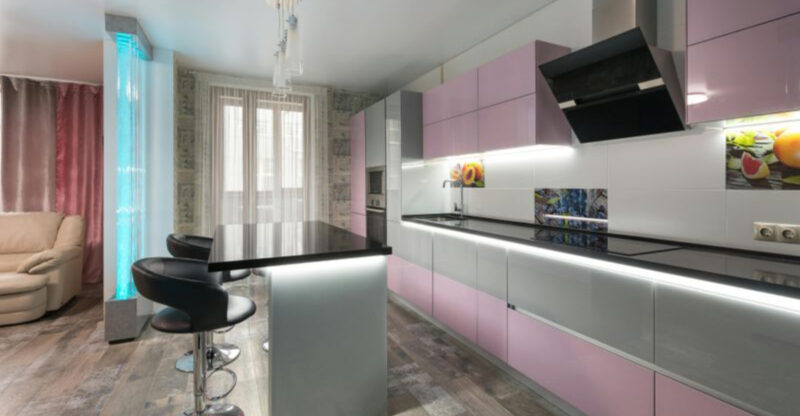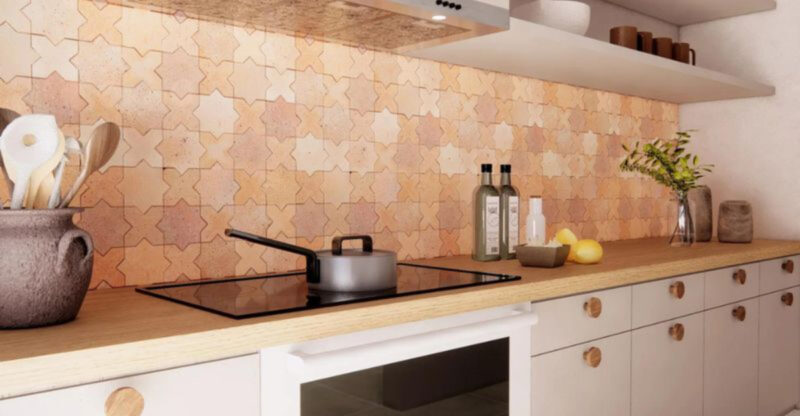19 Differences Between A French Country Kitchen And An English Country Kitchen, Designers Explain
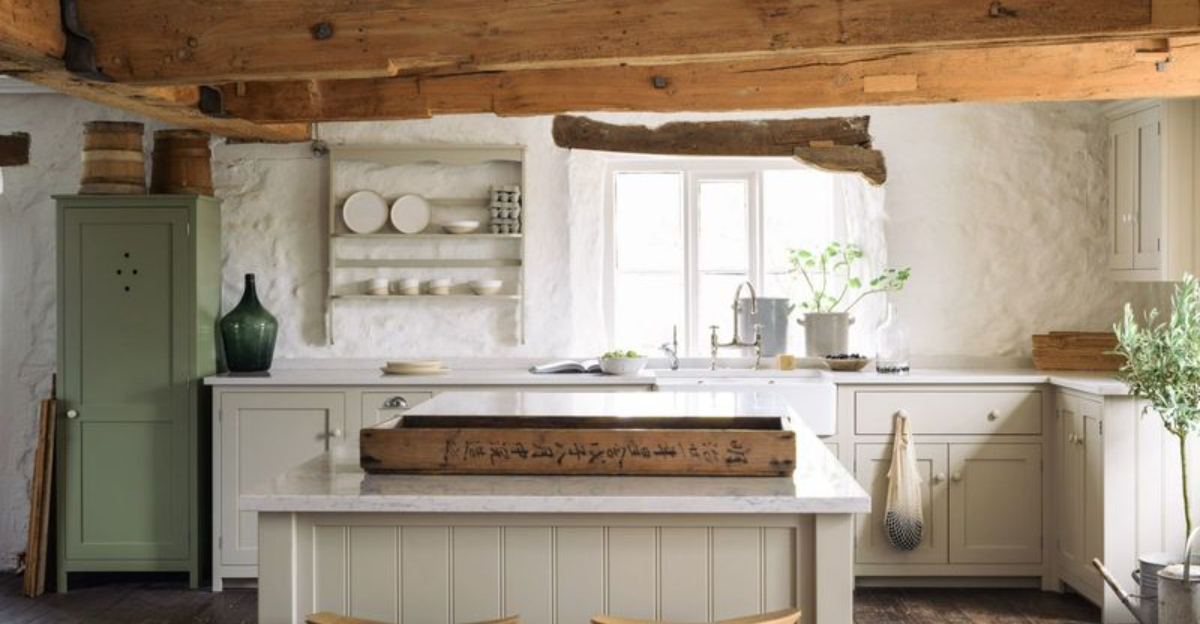
There’s something undeniably comforting about a country kitchen – the kind of space that feels like a warm hug at the end of a long day. Both French and English country kitchens offer that cozy, lived-in charm, but they take different paths to get there.
From the finishes to the flair, each style brings its own flavor of rustic elegance. Whether you’re planning a renovation or simply dreaming of your ideal kitchen, understanding the subtle (and not-so-subtle) differences between these two beloved styles can help you design a space that feels distinctly you.
1. Color Palette Preferences
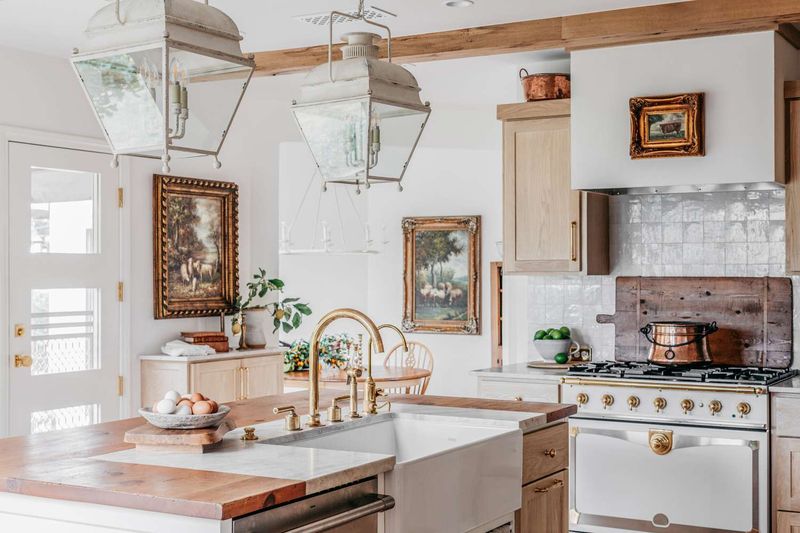
Warm, sun-kissed hues dominate the French approach to kitchen design. Think soft yellows, robin’s egg blues, and gentle terracottas that evoke Provençal landscapes.
English kitchens, meanwhile, typically feature deeper, more muted tones like forest greens, navy blues, and burgundies reflecting their cooler climate. French country kitchens celebrate the colors of southern countryside fields and Mediterranean influences.
2. Cabinet Door Styling
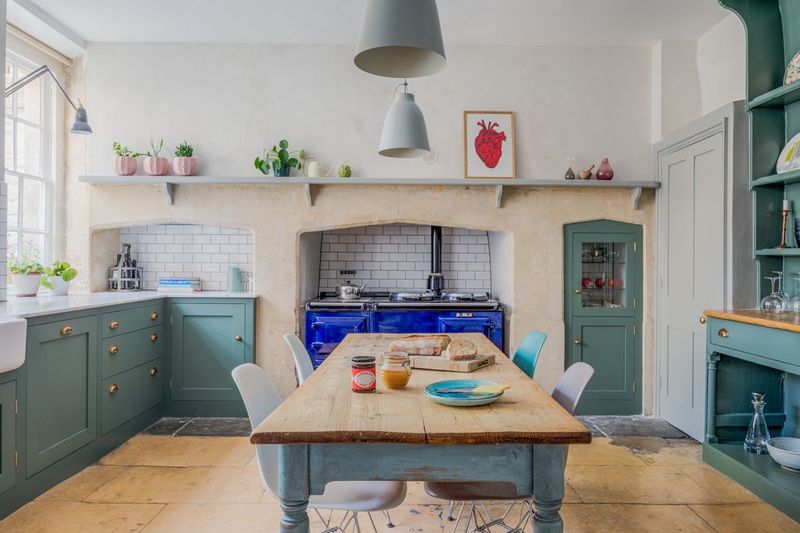
Ornate detailing makes a statement in French provincial designs. Decorative moldings, carved panels, and elegant hardware create visual interest throughout the space.
French cabinets often feature curved lines and painted finishes with distressed edges. English country kitchens typically showcase more straightforward Shaker-style doors with clean lines, natural wood finishes, and simpler hardware that emphasizes function over decoration.
3. Countertop Material Choices
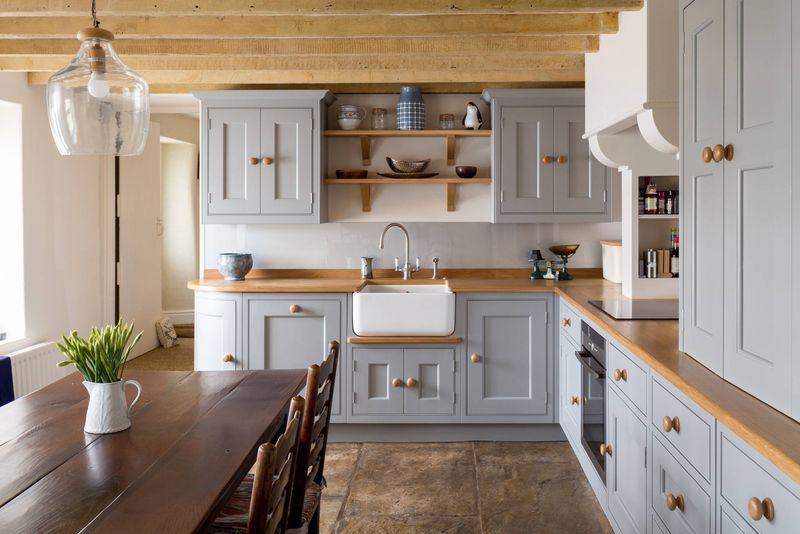
Natural limestone brings authenticity to Gallic cooking spaces. Its porous, light-colored surface develops a beautiful patina over time, telling the story of meals prepared and memories made.
English country kitchens typically feature wooden butcher block or darker granite surfaces that prioritize practicality for serious home cooks. Across the Channel, French kitchens often incorporate limestone or marble countertops with elegant veining.
4. Flooring Distinctions

Terracotta tiles create an earthy foundation in Provence-inspired spaces. Their warm, rustic appeal brings Mediterranean sunshine indoors regardless of weather outside.
French country kitchens embrace these distinctive clay tiles in hexagonal or square patterns. English kitchens traditionally feature natural stone floors like slate or limestone in more subdued tones, often laid in practical patterns that withstand heavy traffic while maintaining rustic appeal.
5. Sink Design Approaches
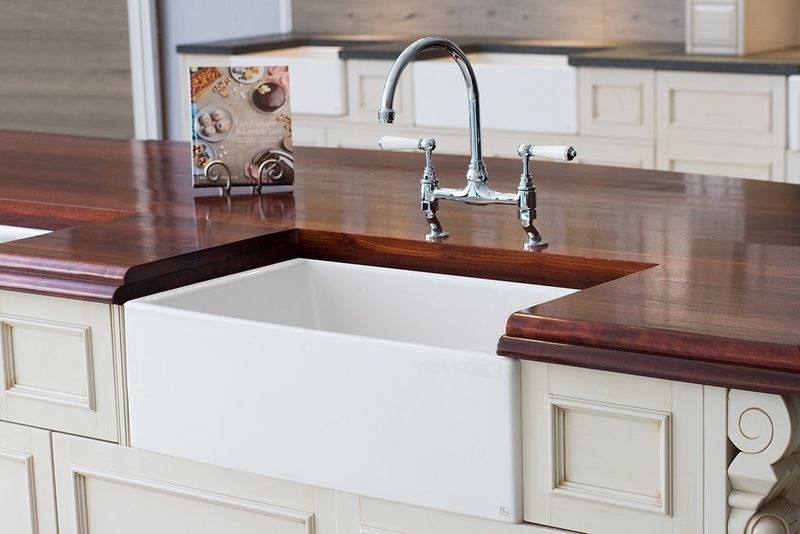
Farmhouse-style vessels reign supreme in both traditions but with notable differences. The apron-front design appears in both styles but serves different aesthetic purposes.
English versions often showcase Belfast sinks – similar in shape but distinguished by an overflow drainage feature, reflecting the practical British approach to kitchen design even in decorative elements. French country kitchens typically feature white fireclay farmhouse sinks with elegant curved fronts.
6. Lighting Fixture Styles
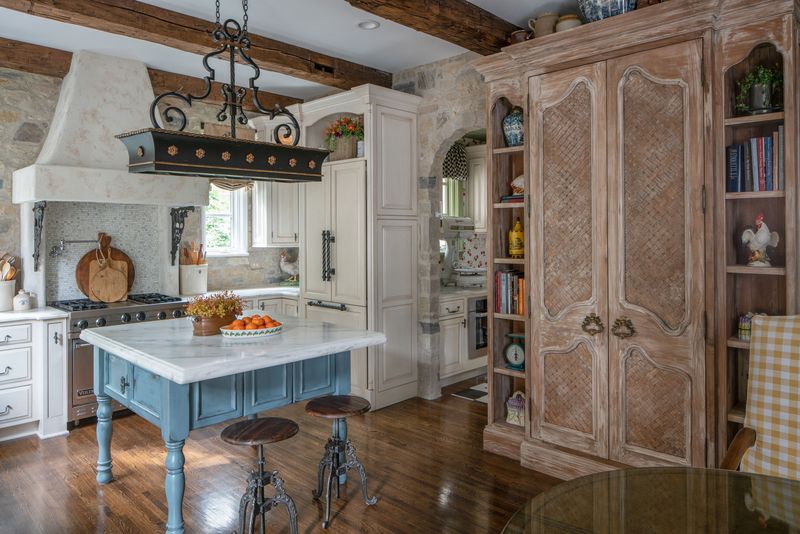
Wrought iron chandeliers add dramatic flair to French culinary spaces. These statement pieces often feature scrollwork and candle-style bulbs that cast a warm, inviting glow.
French country kitchens embrace ornamental lighting with decorative metal finishes. English kitchens typically favor pendant lights in copper or brass with simpler, more industrial designs that highlight function while adding subtle character rather than becoming the focal point.
7. Range Hood Treatments
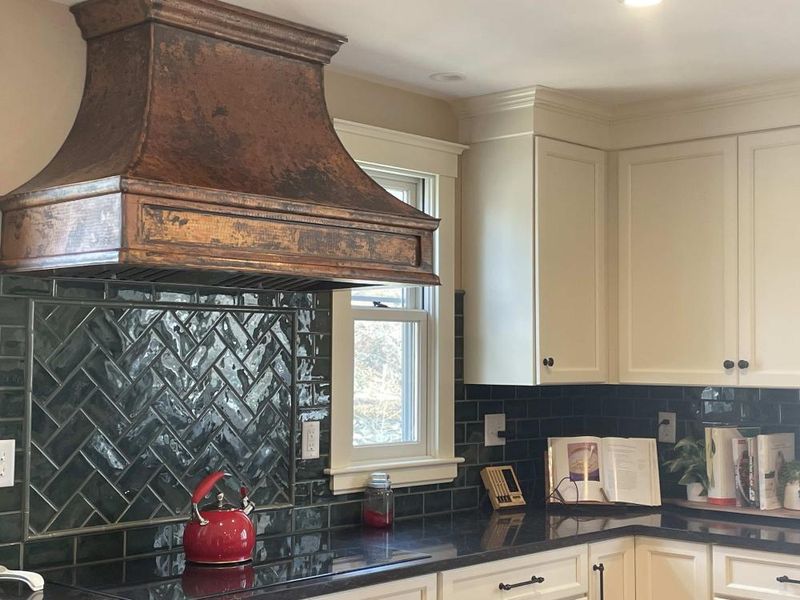
Architectural statements emerge above cooking areas in continental designs. Custom-built surrounds transform utilitarian ventilation into artistic focal points that anchor the entire kitchen.
English kitchens typically feature more understated wood or metal hoods that blend into the overall design rather than calling attention to themselves. French country kitchens showcase elaborate plaster or carved wood range hoods with curved lines and decorative moldings.
8. Open Shelving Approaches
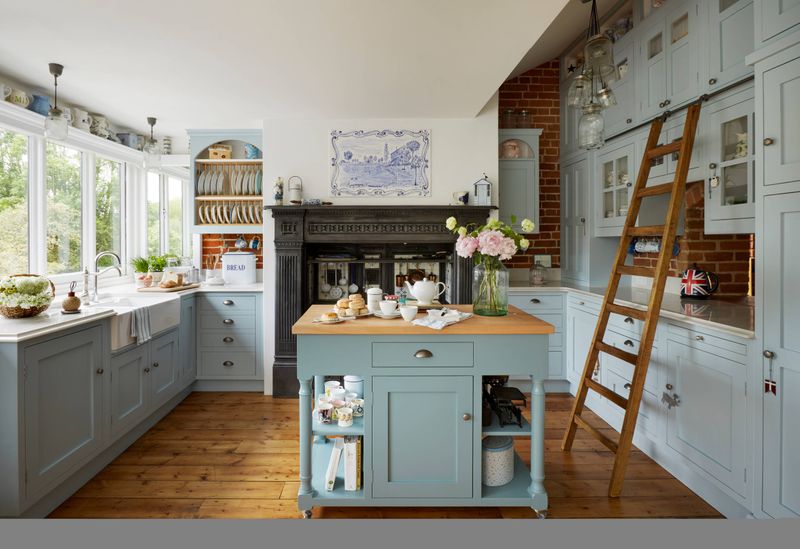
Display opportunities abound in both styles but with different presentation philosophies. The way everyday items become decorative elements reveals cultural preferences.
French kitchens feature open shelving that showcases collections of copper cookware and colorful ceramics. English country kitchens tend toward glass-front cabinets or plate racks that display fine china and family heirlooms in a more protected, organized manner while still keeping items visible.
9. Island Design Philosophies

Freestanding furniture pieces serve as central workstations in Gallic cooking spaces. Repurposed antique tables or buffets create charming, unfitted looks that appear to have evolved over generations.
English designs typically feature more substantial built-in islands that resemble heavy farmhouse tables with thick wooden tops and enclosed storage, emphasizing permanence and solidity. French country kitchens embrace furniture-style islands with turned legs and open storage.
10. Decorative Tile Usage
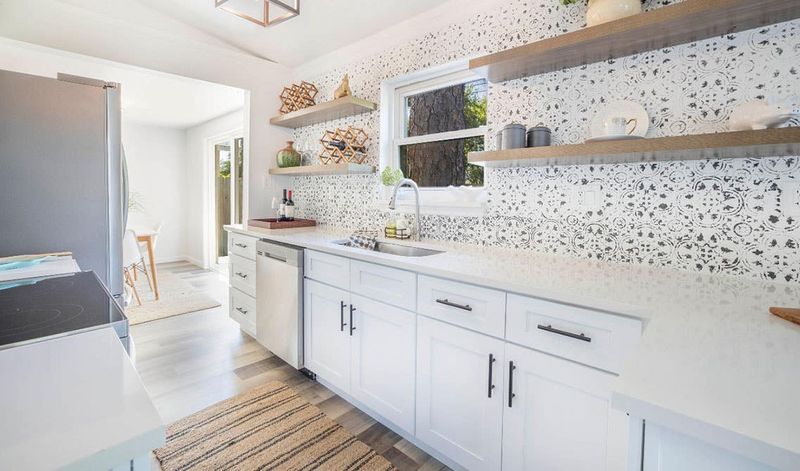
Artistic backsplashes create vibrant focal points behind cooking areas. Hand-painted designs showcase the homeowner’s personality while protecting walls from cooking splatters.
French country kitchens feature decorative tiles with intricate patterns and colorful motifs inspired by Provence. English kitchens typically employ simpler subway or square tiles in neutral colors, occasionally incorporating delft-inspired blue and white patterns that reflect British ceramic traditions.
11. Hardware Finishes
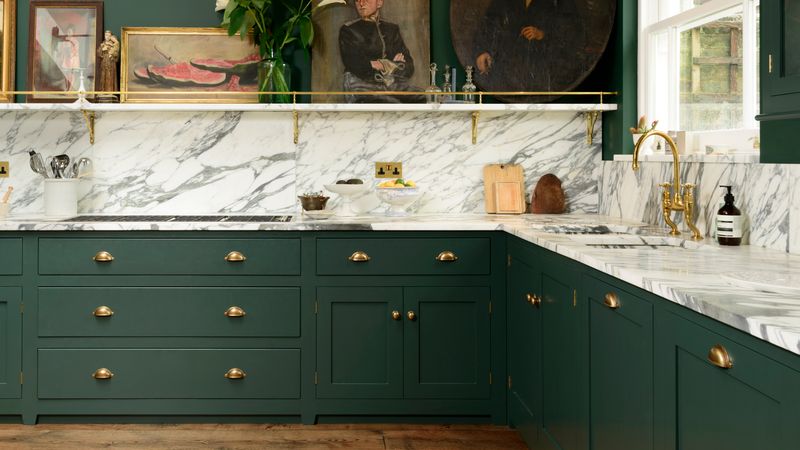
Metallic accents provide jewelry-like details throughout the space. These small elements make a significant impact on the overall aesthetic feel.
English designs favor simpler pewter, copper, or bronze pulls and knobs with clean lines and patinas that develop naturally over time, reflecting their practical, understated approach. French country kitchens typically showcase ornate brass or iron hardware with intricate scrollwork and antiqued finishes.
12. Window Treatment Styles

Natural light flows through differently adorned openings in these distinct traditions. The way sunlight enters reveals cultural approaches to privacy and decoration.
French country kitchens feature simple sheer curtains or cafe curtains in light fabrics with delicate patterns. English designs typically employ more substantial window treatments like roman shades or half curtains in heavier fabrics with floral or check patterns that provide greater insulation against their cooler climate.
13. Ceiling Treatments
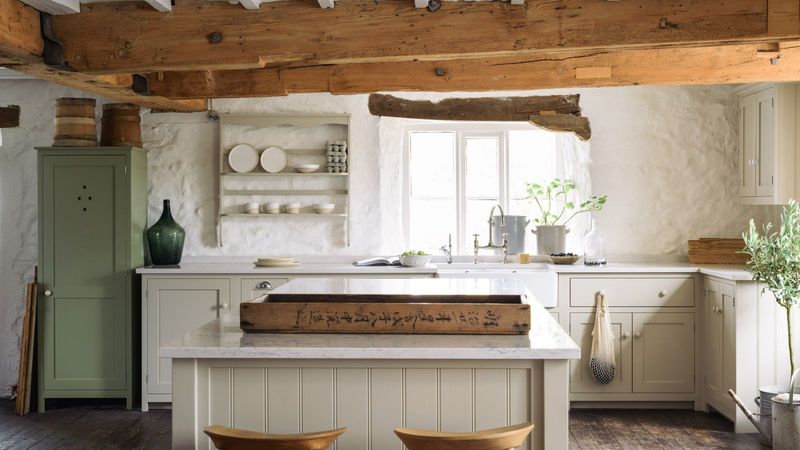
Overhead architectural elements create distinctive spatial experiences. Looking up reveals significant design differences between these two approaches. French country kitchens often feature exposed wooden beams with a whitewashed or natural finish that creates airy height.
English country kitchens typically showcase darker wood beams against white plaster, sometimes incorporating more complex structures like coffered ceilings that add architectural interest while maintaining a cozy, intimate feeling.
14. Faucet Design Preferences

Practical plumbing becomes decorative in these traditional spaces. The silhouette and finish of tap fixtures significantly impact the sink area’s overall look.
French country kitchens typically feature elegant, curved bridge faucets with porcelain lever handles in brass or bronze finishes. English designs favor more substantial gooseneck models with cross handles in copper or pewter that develop a living patina, reflecting their preference for materials that age gracefully.
15. Furniture Integration

Antique pieces find new purpose in these traditional cooking spaces. The approach to incorporating non-kitchen furniture reveals cultural differences in spatial planning.
English designs typically incorporate sturdy oak dressers for dish display, substantial farmhouse tables for family meals, and cushioned window seats that maximize comfort and space efficiency. French country kitchens embrace armoires repurposed as pantries and delicate bistro sets for casual dining areas.
16. Accessory Styling Approaches
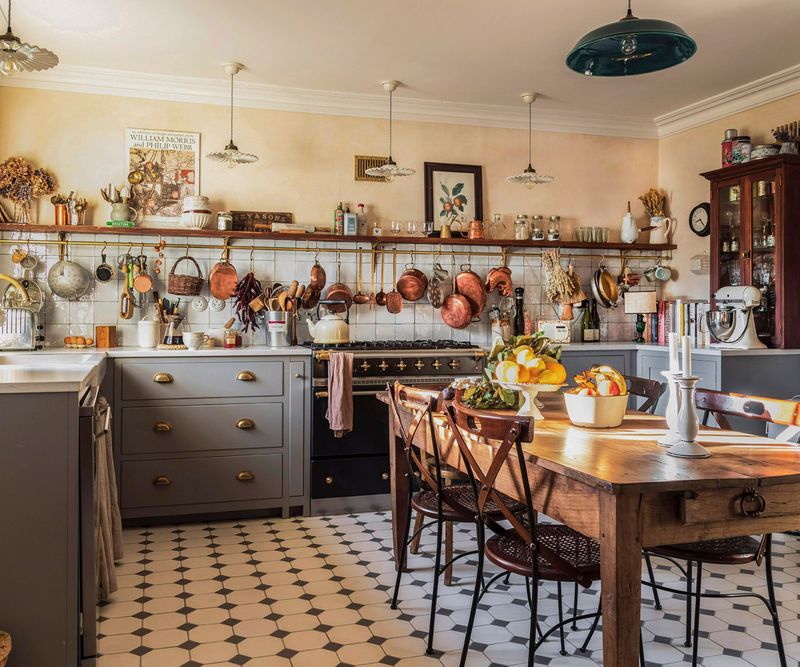
Personal collections reveal cultural preferences through decorative displays. The items chosen for everyday visibility tell stories about what each tradition values.
French country kitchens showcase copper cookware, herb bundles, and market baskets that celebrate culinary traditions. English kitchens display teapot collections, ceramic mixing bowls, and garden-fresh flowers in simple pitchers, reflecting their love of gardening, baking, and the ritual of afternoon tea.
17. Layout Preferences

Spatial organization reveals different approaches to cooking and gathering. The flow between work zones reflects cultural priorities around meal preparation and entertaining.
English designs typically embrace the traditional work triangle with clearly defined zones and a central island or table that serves as both prep space and informal dining area. French country kitchens often feature a central work table rather than built-in islands, creating flexible circulation patterns.
18. Wall Treatment Distinctions
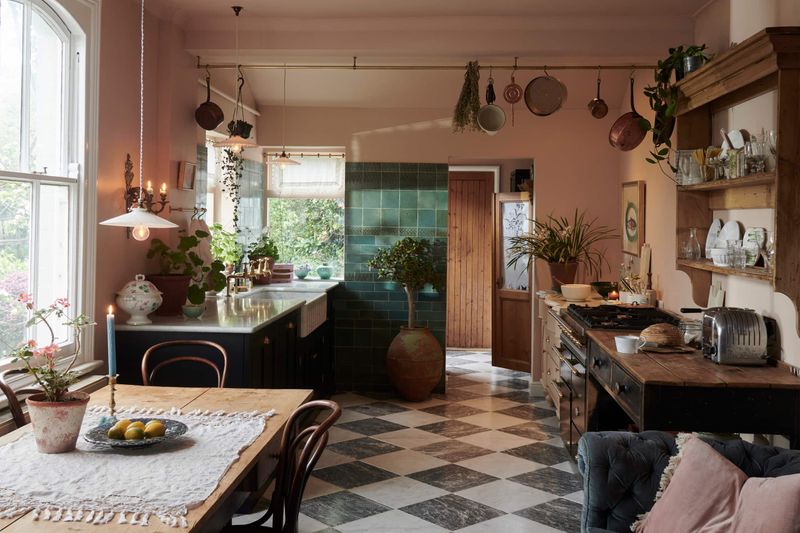
Vertical surfaces showcase different decorative approaches in these rustic styles. The treatment of large wall areas creates distinctive atmospheric qualities.
French country kitchens often feature textured plaster walls with warm washes of color or hand-painted details. English designs typically showcase beadboard wainscoting or painted wood paneling on lower walls with wallpaper or painted upper portions, creating more structured wall compositions with traditional patterns.
19. Cooking Appliance Preferences

Culinary equipment reveals different cooking traditions and priorities. The heart of each kitchen style shows distinctive approaches to meal preparation. French country kitchens showcase professional-style ranges with multiple burners for complex sauce-making and brass accents.
English kitchens typically feature traditional AGA cookers or range cookers that provide continuous heat for slow-cooking, warming plates, and creating the cozy atmosphere associated with British country living.





